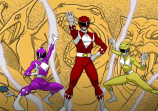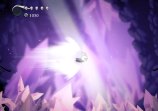A new planet called "Kepler-1647b" has been discovered. It can be seen in the Cygnus constellation, which is 3,700 light years away from the Earth. The planet first showed signs of transit in 2011. It took a few more years to gather data to confirm its existence.
The most astounding characteristic of this new planet is that it orbits two stars, making it have two suns. Planets that orbit two stars are termed as "circumbinary" or "Tatooine" planets. The word "Tatooine" is an acknowledgement of Luke Skywalker's fictional planet in Star Wars.
In a scene where Luke was walking on the planet, he faced two sunsets. Implying that his world "Tatooine" had two suns. Hence, Kepler- 1647b is also termed as the "Star Wars Like Planet." There have been other planets discovered that orbit two suns like the Kepler 16-b. However, the Kepler 1647-b is the biggest planet with this characteristic.
Researchers from San Diego State University (SDSU) were the ones who discovered the planet. They used the Kepler Space Telescope for its identification, which is why they named is the Kepler-1647b. The Star Wars-like planet is said to be 4.4 billion years old, which is similar to the Earth's age. Reports claim that among all discovered planets, this has the longest recorded orbit for transiting planets.
The discovery of this Star Wars-like planet is marked to be an important event as scientists agree that it can help in the further understanding of the universe. Scientists think that studying extreme cases, such as this one, is essential because it will give researchers a window to comprehending the formation and development of circumbinary planets. The case is said to be extreme in two aspects: (1) It has the longest orbit period and (2) It is the largest circumbinary planet, the Daily Mail reported.
It is said that discovering circumbinary planets is a harder task than finding a planet that has only one star. This is because the transits they emit are not regularly spaced in time. They also vary in depth and duration.
Jerome Orosz, an astronomer at San Diego State University, expressed that it is quite surprising that the Star Wars-like planet was not found sooner. He elaborated that bigger planets are typically easier to spot than smaller planets, Deutsche Welle said. However, the fact that it has two suns may have had an effect on its late discovery.








